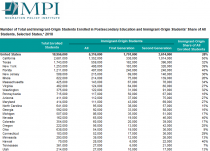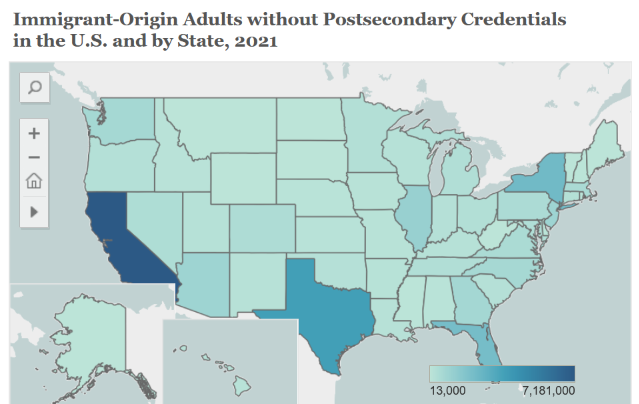Navigating the Future of Work: The Role of Immigrant-Origin Workers in the Changing U.S. Economy
Immigrant-origin workers—that is, immigrants and their U.S.-born children—have been the main drivers of U.S. workforce growth in recent years. They were responsible for 83 percent of labor force growth between 2010 and 2018, at which point they made up 28 percent of all U.S. workers. Looking ahead, all growth in the working-age population is projected to come from immigrant-origin adults through 2035.
Yet research on the future of work in the United States has largely overlooked this important segment of the workforce. This report examines the jobs held by immigrant-origin workers and third/higher-generation workers (those born in the United States to U.S.-born parents), and which of these jobs are likely to grow versus decline due to automation, offshoring, and other trends. It also considers the implications of the changing mix of jobs in the U.S. economy for both workforce development and immigration policy.
Among the findings of this data analysis:
- Similar shares of Immigrant-origin and third/higher-generation workers held “jobs of the future” (22 percent versus 24 percent) and declining jobs (26 percent versus 29 percent) in 2018.
- Latinos—both those of immigrant origins and the third/higher generation—were less likely than workers in other major racial or ethnic groups to hold jobs of the future and more likely to hold declining jobs.
- Black immigrant-origin workers were overrepresented in jobs of the future in 2018, particularly in health care and health-care support, while third/higher-generation Black workers were more likely to hold declining jobs, such as office and administrative support occupations.
This report is part of MPI’s multiyear Rethinking U.S. Immigration Policy initiative, which aims to generate a big-picture, evidence-driven vision for the role immigration can and should play in America’s future. To learn more about the initiative and read related research, check out the initiative’s home page.
1 Introduction
2 The Immigrant-Origin Workforce
3 Immigrant-Origin Workers and the Future of Work
A. Projected Trends in the Future of Work
B. Jobs of the Future and Declining Jobs
C. Where Do Immigrant-Origin Workers Fit In?
D. Race and Ethnicity and the Future of Work
E. Changes in the Quality of Jobs
4 Conclusion






